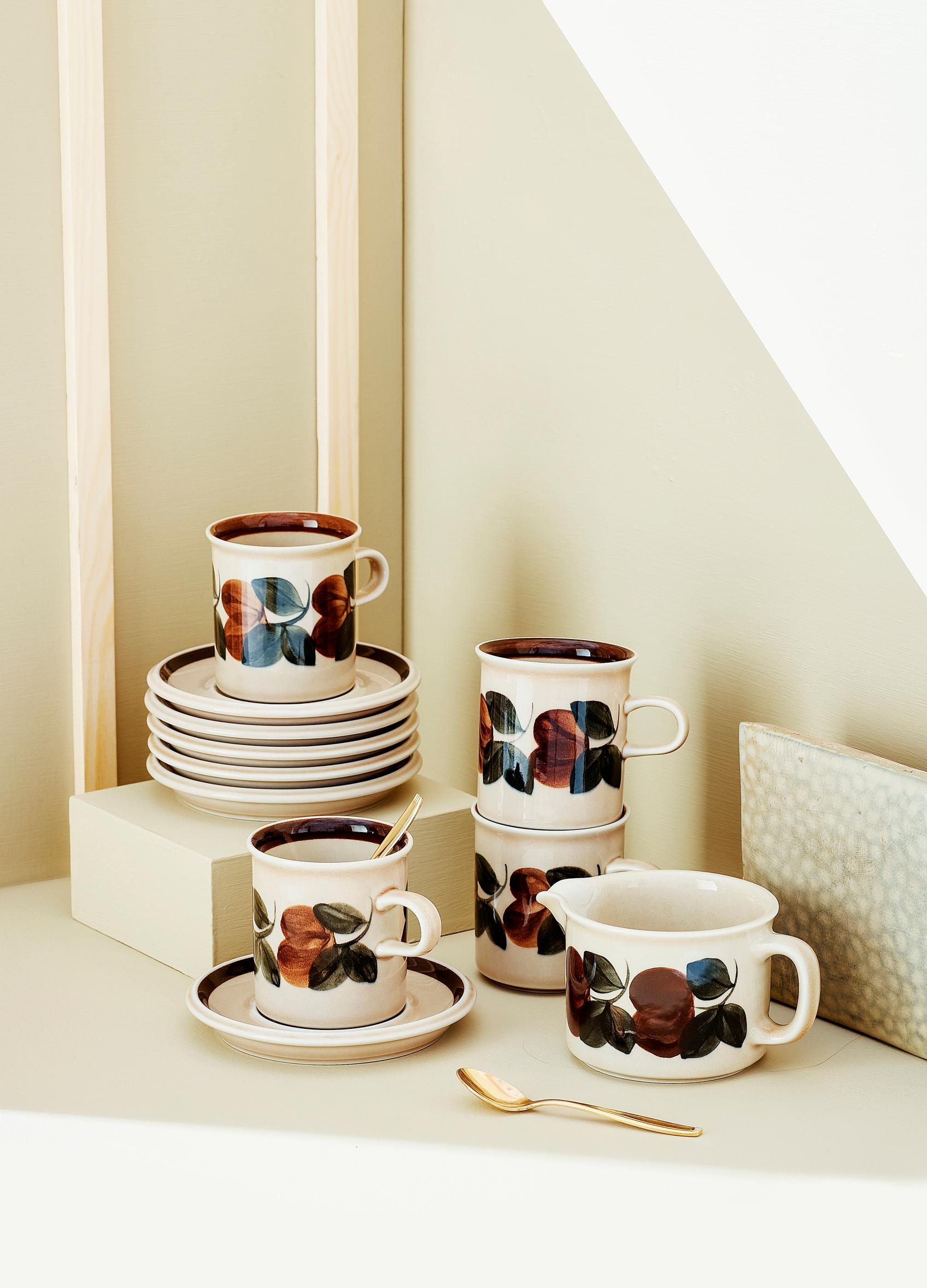
Coffee cups with surprising price tags—Finnish tableware merchant reveals four vintage sets in high demand
People who search for pre-loved tableware usually look for sets they already know, says Tiina Westerlund, the shopkeeper of the Finnish dishware store Astialiisa. Beyond Teema and other longstanding Finnish classics, she highlights four dinnerware sets that are especially sought-after right now.
One might imagine that the most sought-after vintage dishes are those hard-to-find rarities people search for high and low. Finnish specialty dishware store Astialiisa’s merchant Tiina Westerlund says, however, that most people are really just after fairly everyday pieces.
“People buy a lot of pieces they already use every day. My sense is that people rarely start collecting vintage tableware from scratch; instead, they build on the sets they already have.”
According to Westerlund, classics like Kilta, Teema, and Ruska remain popular for everyday use.
Older Teema dishes remain in demand as many are looking for discontinued colors they once collected. Teema’s predecessor, Kilta, was initially a herald of a new era in tableware, featuring stackable, multifunctional pieces, Westerlund explains. Perhaps that practicality still appeals to people.
A favorite from the 1960s–70s Ruska stood apart from other series of its time in terms of design, material, and decoration. Its rustic brown finish still helps it stand out on the shelf.
“If you find signed, one-of-a-kind ceramics by, for example, Rut Bryk or Birger Kaipiainen, then it’s a real treasure.”

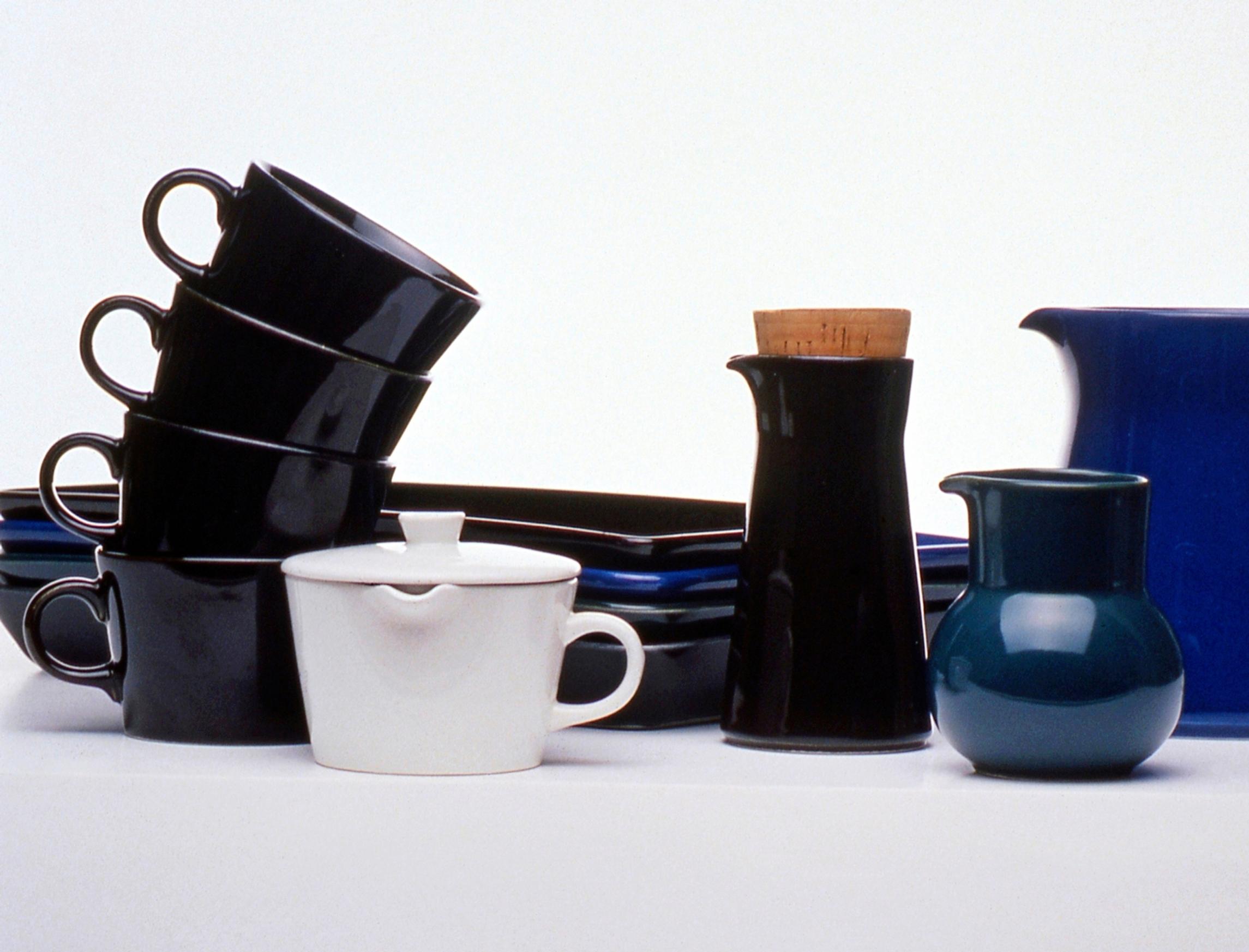

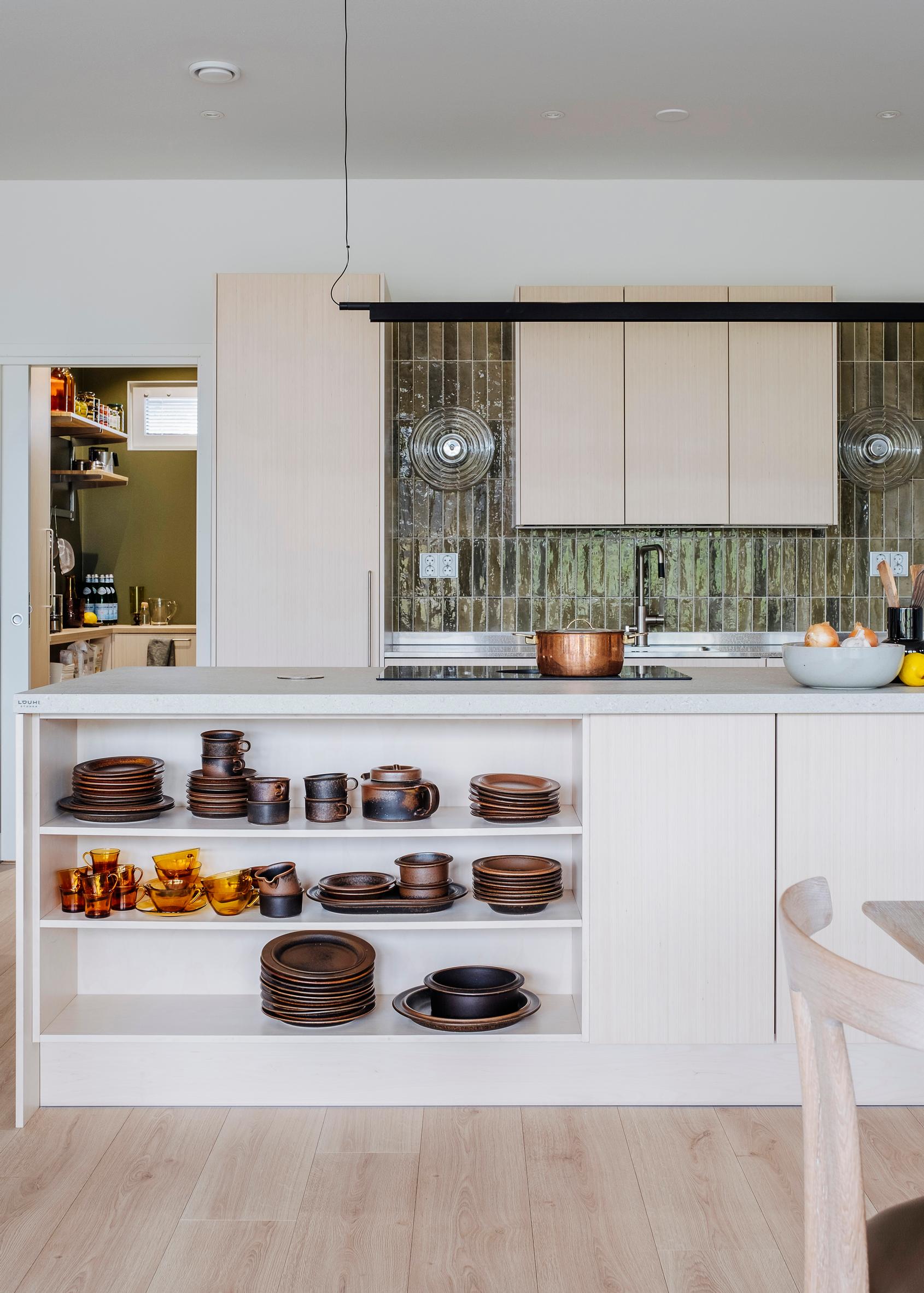
Though these series are in high demand, they’re also fairly easy to find.
“Just search online, and you’ll see how much Teema and Kilta are out there. There’s a huge supply of Ruska, but the tricky part is that quality varies a lot. You’ll come across plenty of second- and third-grade pieces,” Westerlund says.
But could something in your own kitchen cupboard be a hidden tableware treasure that’s worth a tidy sum if you sell it?
Don’t hold your breath over just any old coffee set from your mother’s archives. Westerlund doesn’t think older everyday tableware is particularly valuable.
“However, if you stumble upon signed, one-of-a-kind ceramics, say by Rut Bryk or Birger Kaipiainen, that’s where you may have a real treasure.”
In addition to these everyday favorites, Westerlund also points out a few other vintage dinnerware series that are currently in high demand:
4 sought-after dinnerware series
1. Krokus

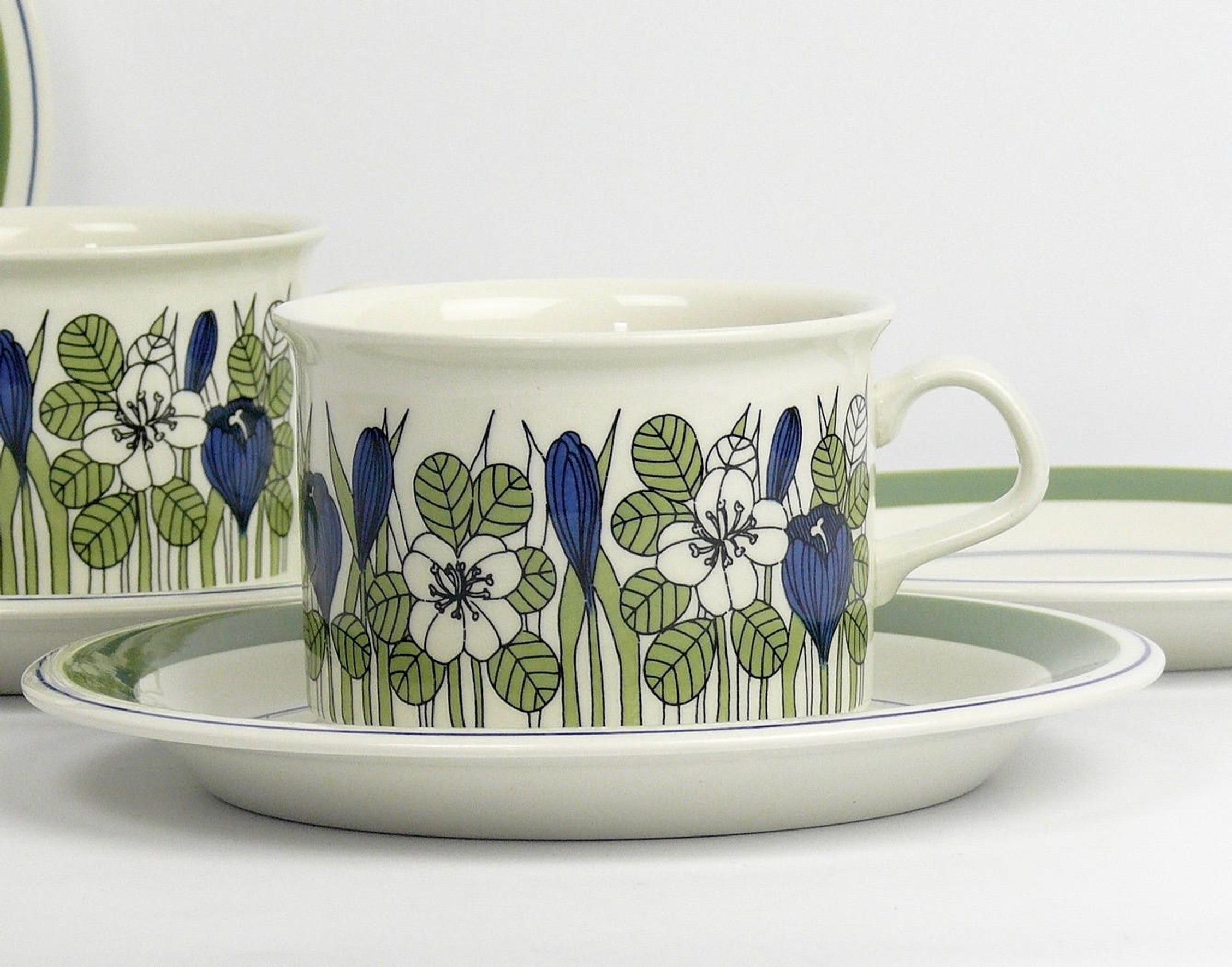
Arabia produced the Krokus series for just a couple of years in the late 1970s, yet it became widely popular. The collection is now back in production, but vintage Krokus remains in greater demand than supply.
2. and 3. Anemone and Ruija

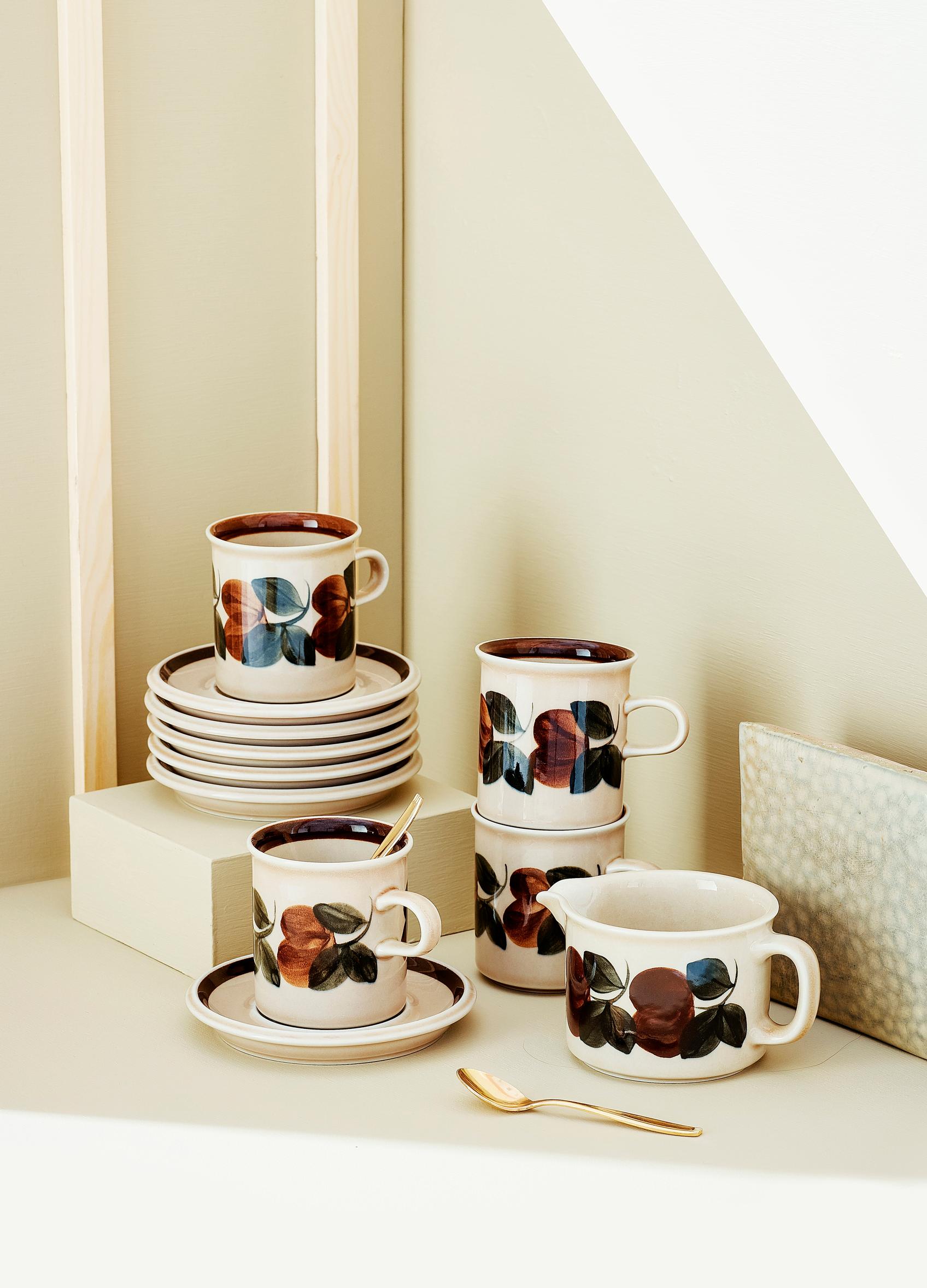

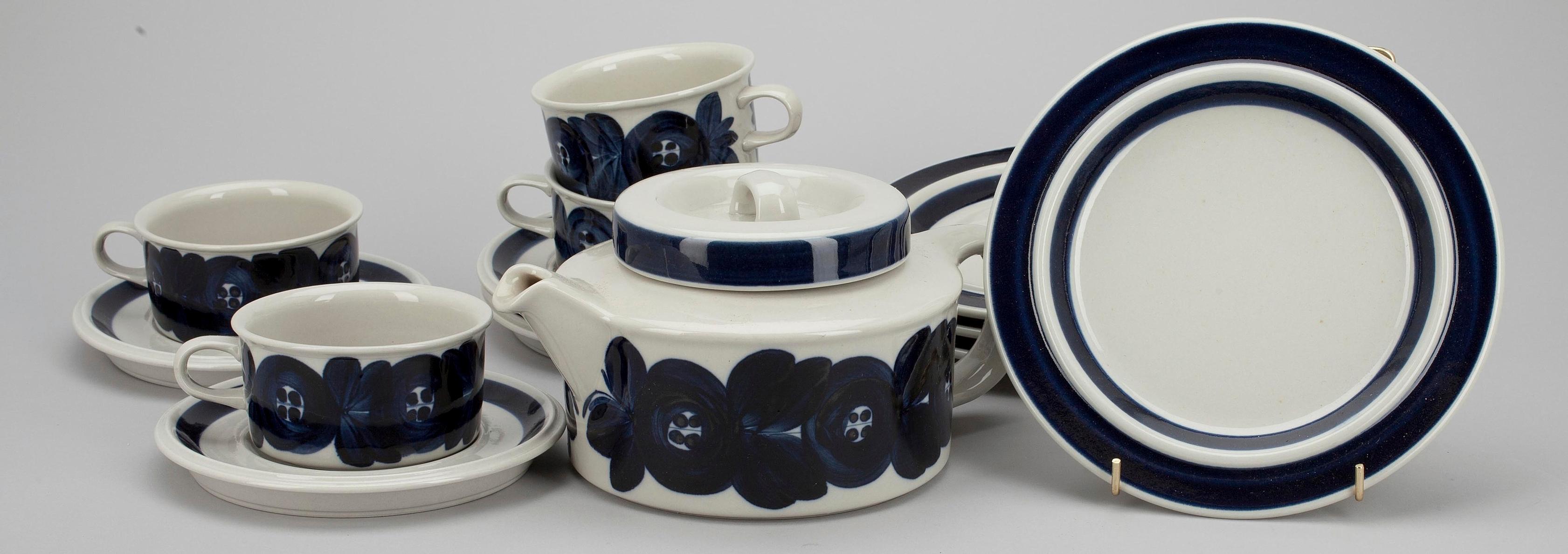
Westerlund suspects that hand-painted dishes may have gained popularity recently. Great examples include Arabia’s Anemone and Ruija [in Finnish]. Only some items, like cups, carry a floral design, while the plates have a stripe. Floral versions can be harder to find. The decorations for Ruija and Anemone were done by Raija Uosikkinen, and the base design was by Ulla Procopé.
4. Valencia

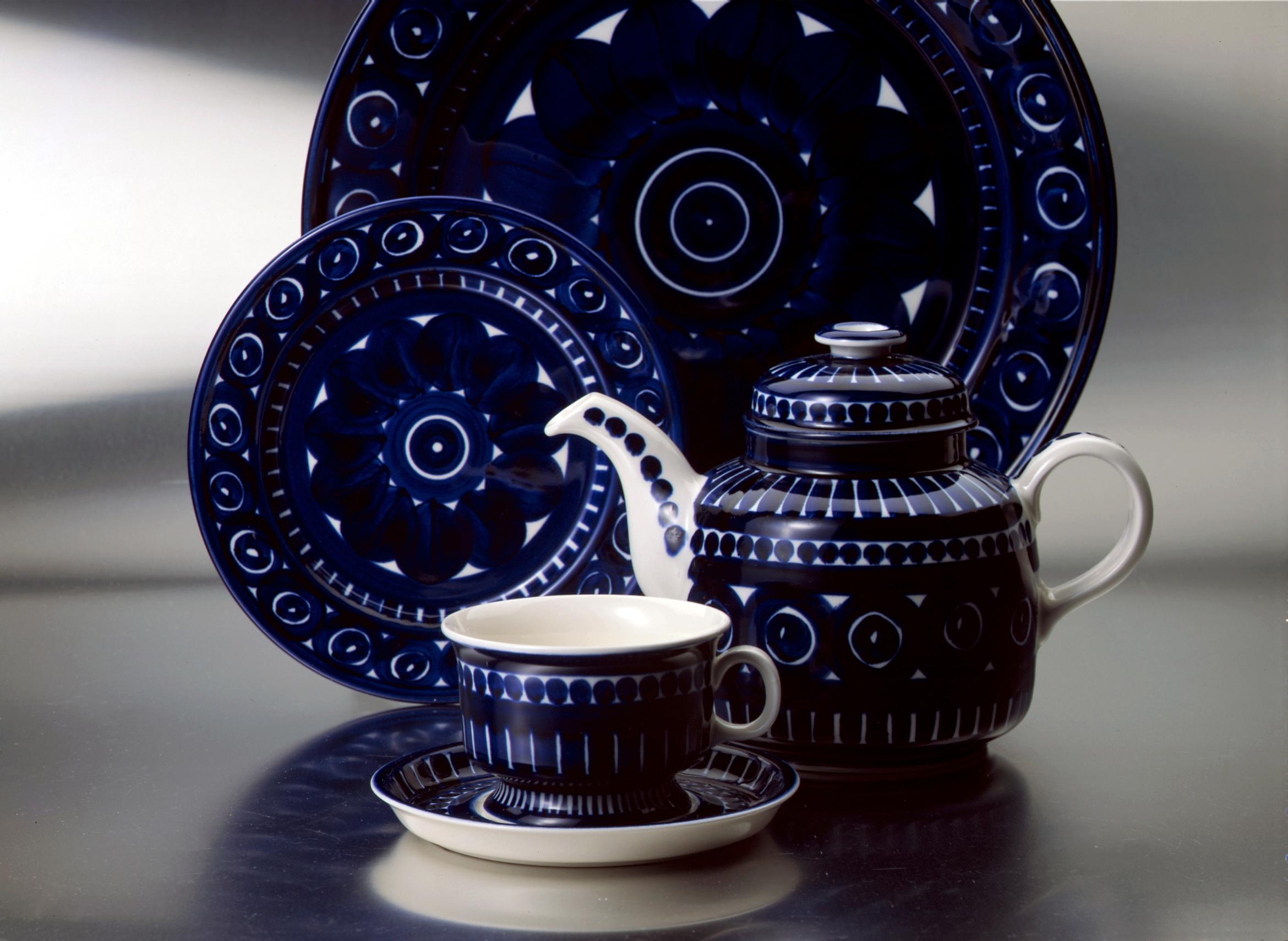
Arabia’s hand-painted Valencia was already highly valued while it was still in production (1961–2002). Many collectors never finished building their sets, and now they’re gradually adding more. Certain pieces are trickier to find than others. For example, teacups may be easier to locate than large serving platters. Ulla Procopé designed the series.


